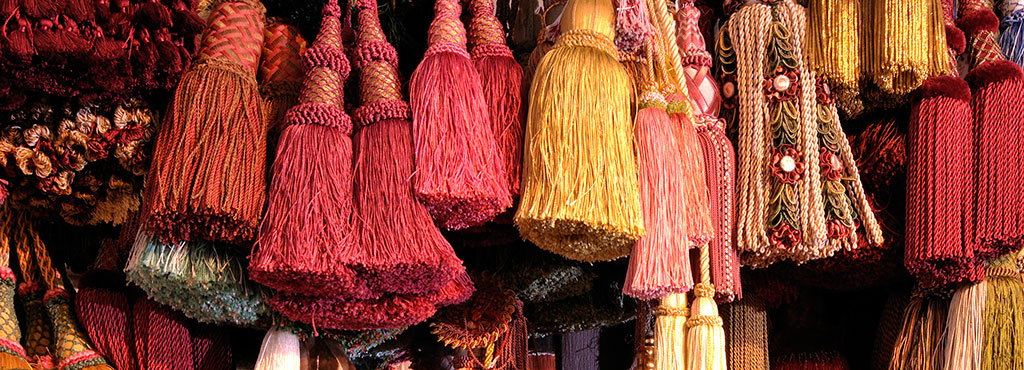Welcome to Posamenten-Müller!
Even the ancient Egyptians used passements as embellishment on their most important items and the garments of the Pharaohs were also decorated with them. In Europe, the decorative tassels, tiebacks, fringes, braids and other elements mainly celebrated their heyday in the 17th and 18th Century, during the Baroque period. Famous regents such as the French Sun King Louis XIV, or even later King Ludwig II of Bavaria were great lovers of sumptuous passements and used many of them when furnishing their palaces.
The decorative pieces were popular status symbols among the nobility, but also among wealthy merchants. In the 19th Century this form of decoration went through a renaissance: Passements were increasingly used once again.
The term passement comes from the French word “passement”. In German as in other languages there is no direct equivalent therefore the word was adopted and Germanized. Today, the term describes decorative elements, which are attached as adornments on curtains, upholstery or clothing.



